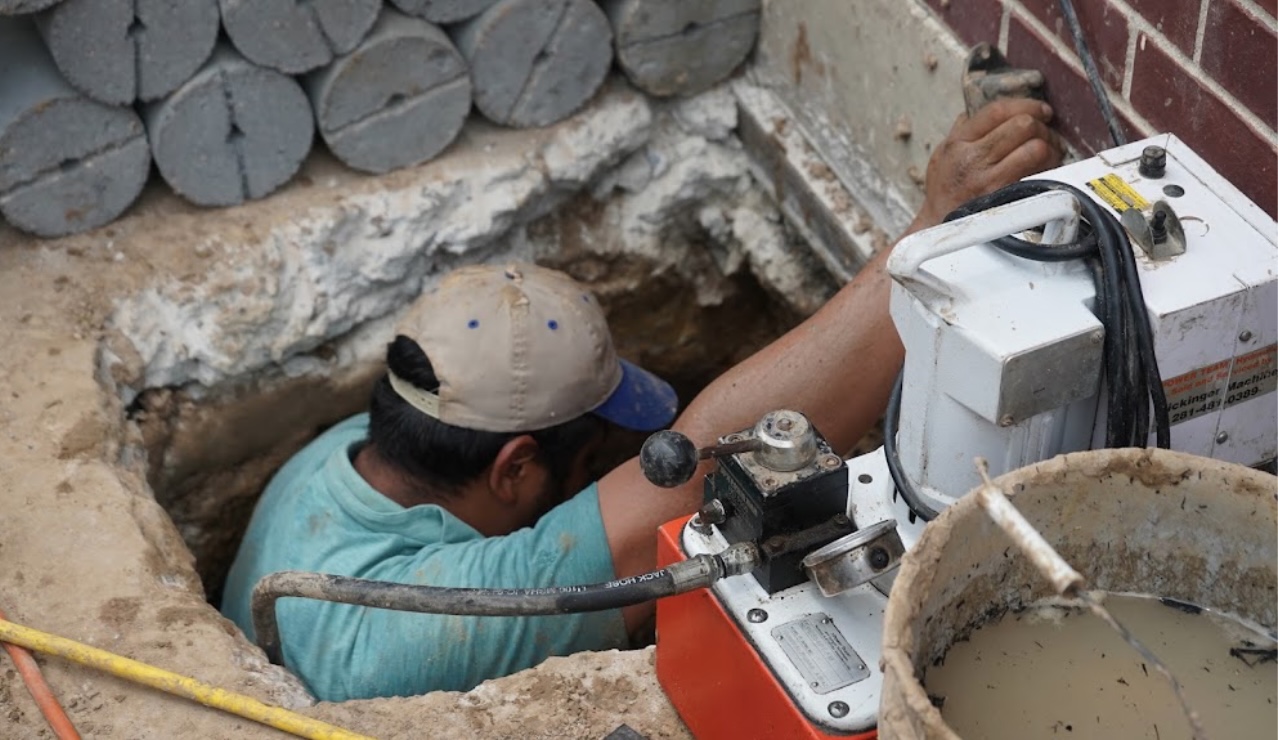 Compared to many other areas in the country, a Texas winter may be relatively short and mild. However, there are often periods when the temperature plummets below freezing. Ice and even snow can blanket the ground at these times. While you may immediately think about treacherous road conditions and damage to your yard’s vegetation under these conditions, winter weather can also be a detriment to your home’s foundation, by causing winter foundational damage.
Compared to many other areas in the country, a Texas winter may be relatively short and mild. However, there are often periods when the temperature plummets below freezing. Ice and even snow can blanket the ground at these times. While you may immediately think about treacherous road conditions and damage to your yard’s vegetation under these conditions, winter weather can also be a detriment to your home’s foundation, by causing winter foundational damage.
How Frost and Ice Cause Foundational Damage
The freezing air temperature can result in freezing temperatures as far as nine inches underground. When the ground freezes, ice lenses and frost heaves can develop. These result in voids and cracks that ultimately can cause serious foundational damage. When moisture in the soil freezes, a frost heave can occur. This is because the frozen moisture causes the soil to expand upward and outward. Pressure on the foundational walls increases, and the concrete could crack or shift. Larger amounts of ground moisture will result in more intense pressure against the structure.
In some cases, ice will develop specifically in one area, such as when moisture is in a small crack in asphalt or concrete. This is called an ice lense. Just as frozen moisture in the soil causes the ground to expand, ice in these small cracks can increase pressure against surrounding surfaces. The result may be increased pressure in these localized areas that ultimately can lead to damage.
The increased pressure against the foundation caused by ice lenses and frost heaves can create new cracks and widen existing ones. Each episode of freezing weather conditions can magnify the problem. Eventually, you may find that serious damage has occurred to your pier and beam or slab foundation. In addition to causing the slab to shift, issues with structural damage to the house and water damage in the basement can occur.
Another cause of foundational damage during the winter season is frozen pipes. Ruptured pipes do more than cause serious leaks and home flooding. The leaking water can also penetrate the foundation. This may result in the structure weakening. If the concrete slab remains moist when the next freeze arrives, that moisture may freeze and expand to cause additional damage.
How to Prevent Foundational Damage This Winter
There is not much that you can do about freezing temperatures, snow, sleet and ice. However, there are steps that you can take to reduce the likelihood and severity of damage to your pier and beam or slab foundation. What are some important steps to take before the next freeze arrives?
Inspect and Clean the Gutters and Downspouts
The purpose of gutters and downspouts is to channel water away from the home to prevent erosion, damage to the siding and other related issues. This is the time to check where the downspouts deposit the water. Many downspouts drop the water off only a foot or two from the home. If this is the case, consider installing extenders so that the water is deposited approximately 10 feet away. In addition, clean the downspouts and gutters so that they can do their important job as effectively as possible.
Grade the Soil
Even with an effective gutter system in place, some precipitation can fall on the ground close to the home. When the ground is not properly graded, additional moisture can run downward toward the house. Take a look at the slope of your yard today. If the ground is completely flat or if there is a gentle slope toward the house, consider doing some yard work or hiring a landscaper before the first freeze of the year. When the soil slopes downward and away from the house, the moisture will naturally flow away from the concrete slab. French drains and other measures can minimize the severity of potential ice lenses and frost heaves.
Take Advantage of Mulch
Mulch has a number of key benefits that extend beyond beautifying flowerbeds. For example, it can serve as a blanket around the foundation of the home. If you are like many Texas homeowners, you may only have mulch spread across the flowerbeds, but you can benefit from using it around the entire perimeter of the house at a width of approximately one foot.
Insulate the Pipes
Many homes in Texas have not been constructed to endure harsh winter weather conditions. This means that many pipes have not been insulated. When the outside temperature dips below freezing, there is a greater chance of uninsulated pipes freezing and rupturing. You can reduce this risk by insulating all of the pipes in your home’s outer walls. It is also beneficial to maintain the interior air temperature at 55 degrees or higher regardless of whether you are home or not to avoid winter foundational damage.
Seal Foundational Cracks
Water can collect and freeze in even small fissures in your home’s foundation. These gaps can be repaired easily, and this step can help you avoid expensive repair costs down the road. Simply seal any voids, cracks or fissures with caulk. For larger damaged areas, it may be beneficial to contact experts to assess and repair the damage properly.
Use Piers Effectively
Piers and beams add more strength to your home’s base. If you already have a pier and beam system in place, this is the right time to inspect their condition. It may be advisable to request a professional inspection from time to time. Experts may identify issues that are not visible to the untrained eye. A foundation inspection is also a good idea if you do not currently have piers installed. During the inspection, you can learn if piers are recommended for your home.
Shovel Snow
On those rare occasions when it does snow in Texas, it is important to shovel the snow away from the perimeter of the house. As the snow melts, the moisture can saturate the ground and penetrate into the concrete slab. Excess moisture could weaken the structure. If the air temperature freezes once again at night, this moisture could result in ice lenses and frost heaves. Simply shoveling the snow a few feet away from the base of the house could minimize this risk.
Winterize Your Irrigation System
Irrigation systems are subject to freezing when the ground soil gets cold enough. Frozen irrigation pipes can rupture and spew a considerable amount of water into the ground. Often, these leaks may go unnoticed for many days or weeks. This additional moisture in the soil can lead to foundational damage related to frost heaves and ice lenses. A smart idea is to winterize your irrigation system as a preventive measure.
Know the Signs of Foundational Damage
In addition to preparing your home for the winter season, you should be observant of your home’s condition throughout the year. In many cases, foundational damage is not immediately apparent. However, it will eventually lead to cracks in the walls and uneven or cracked floor tiles. You may also notice that doors and windows in some or all areas of the home stick or are difficult to close. If any of these signs are present in your home, contact a foundational specialist today. When repairs are completed soon, you can minimize the severity of the damage.
Request Foundation Service Today
Du-West Services has been meeting the foundational service needs of Texas homeowners since 1978. Whether it has been a while since your last inspection or you are concerned about the possibility of foundational damage, requesting a professional inspection as soon as possible is important. Contact Du-West Services today to schedule an appointment.
